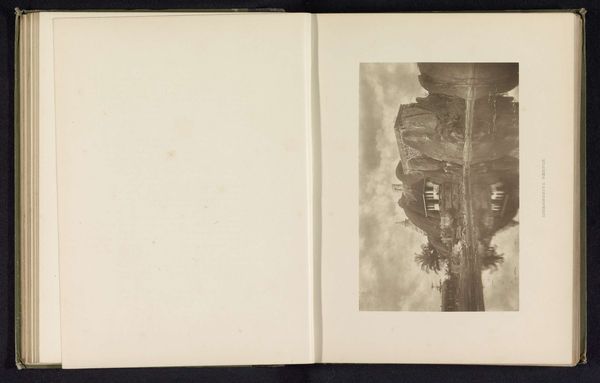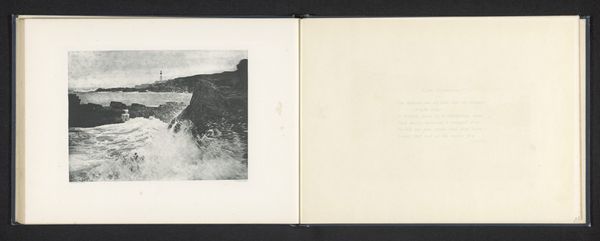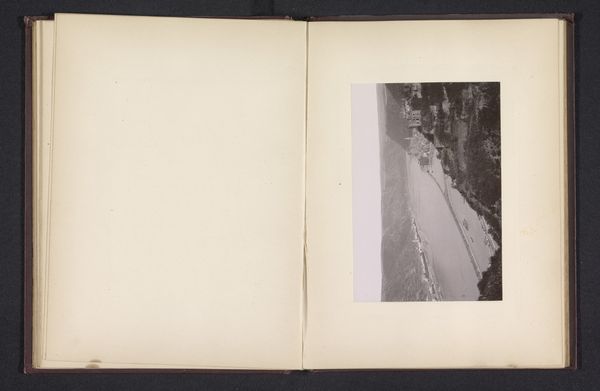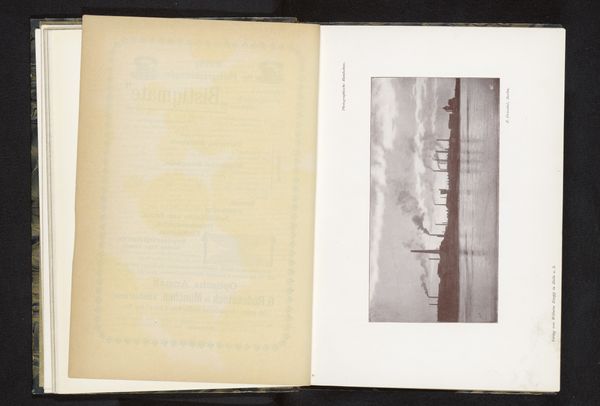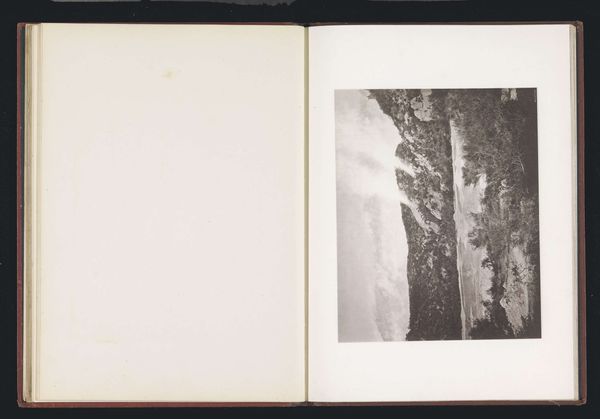
Dimensions: height 198 mm, width 245 mm
Copyright: Rijks Museum: Open Domain
Curator: The stark contrast immediately captures my attention. There's an almost brutalist quality to the landscape despite the natural subject. Editor: We are looking at "Gezicht op de White Terraces te Lake Rotomahana", a gelatin silver print from circa 1865-1875, attributed to Daniel Louis Mundy. I’m immediately drawn to the way the composition seems to be divided almost in two—sky versus earth— bisected by that compelling horizontal band. Curator: Exactly. And observe how Mundy employs the then-emerging photographic technology. Gelatin silver printing allowed for a tonal range that lithography simply couldn’t match. Think about the social implications here—access to previously impossible levels of visual detail suddenly becoming attainable. Editor: You raise an interesting point, because beyond the documentary aspect, there’s a undeniable artistry in the composition. Note the light’s quality and how it interacts with the terraced formations, highlighting their unique shapes, creating that visual hierarchy and balance across the composition. Curator: The act of photographing itself here implies something crucial about resource extraction, as access to locations is gained by laborers and facilitated by indigenous knowledge. These technologies enable new modes of accessing sites; the very means by which this image was produced are critical to its interpretation. What labor went into capturing it? What does the final work obscure? Editor: A worthwhile question! But returning to the image itself for a moment—note the subdued color palette, creating an almost ethereal effect. See how that texture draws us closer into the materiality? The monochrome is key; the composition allows us to abstract, removing any reference to contemporary color printing fads or consumer accessibility that might flatten the meaning. Curator: Fair point about the artistic element, but understanding who could actually own, disseminate, and interpret such images remains crucial. It underscores existing class structures, access to land ownership, as well as access to the materials required for that production of photographs. These elements must have dictated both access and visibility to these visual records! Editor: Perhaps. Ultimately, Mundy has provided an invaluable visual record. Whether approached materially or structurally, the work rewards scrutiny and provokes deeper enquiry into the natural and cultural landscape. Curator: I agree that the artwork provides opportunities for deep analysis, with production and interpretation continually impacting one another.
Comments
No comments
Be the first to comment and join the conversation on the ultimate creative platform.




